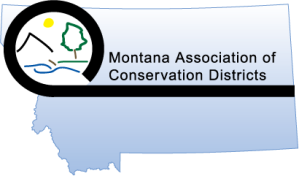 In ranching it’s often necessary to spend money to make money. Funds from savings accounts or operating loans are spent to purchase inputs such as vaccine, seed, fertilizer, or feed. These inputs help fuel the engine that hopefully returns enough income to replenish the savings account or repay the bank, and also cover enough living expenses that you can afford to play the game again next year.
In ranching it’s often necessary to spend money to make money. Funds from savings accounts or operating loans are spent to purchase inputs such as vaccine, seed, fertilizer, or feed. These inputs help fuel the engine that hopefully returns enough income to replenish the savings account or repay the bank, and also cover enough living expenses that you can afford to play the game again next year.
Range grasses often play a similar game during early autumn. Most years range grasses go dormant in late summer when days get hot and soils get dry. If more mild temperatures return in September and October accompanied by rain or early wet snow, grasses respond by breaking summer dormancy. To initiate this new growth grasses must draw upon stored energy reserves in their roots and stem bases. In other words, grasses must spend some of their savings to kick-start the new growth in early fall.
After the new leaves reach one-third to one-half their mature size they produce enough energy via photosynthesis to fuel their own growth and begin replenishing the plant’s energy reserves (i.e., begin repaying the bank). With enough time and leaf area, grasses are able to repay the bank, cover their living expenses, and can afford to play the game again next year. However, if grazing during early fall removes too much of this new leaf area before plants replenish their reserves, range grasses enter winter in a weakened condition, may not survive winter, won’t produce as much forage next spring, and won’t compete as well against weeds next year.
Similar situations occur in hay fields cut too late in the season, prompting recommendations that the last cutting of hay should occur at least three weeks before the killing frost to enable plants to recover before winter, or swathing should wait until later in the season when cold temperatures prevent plants from expending stored reserves to fuel regrowth.
Few ranches, however, are able to stop grazing three weeks before the first killing frost in order to manage their livestock grazing enterprise as they do their hay enterprise. One approach that can help is to move livestock from rangelands to seeded pastures comprised of grass species that better tolerate grazing during early fall. If this is not feasible, another approach is to reduce grazing intensity during early fall. Grazing lightly during early fall (i.e., leaving more than three to four inches of residual forage height after grazing) provides grasses more leaf area for photosynthesis to produce energy that can restore the reserves used to break summer dormancy. Rotational grazing also works well during fall. The first grazing period can be brief during early fall when grasses are growing, followed by heavier grazing during late fall when it’s too cold for plants to initiate regrowth after grazing.
In summary, close grazing of range grasses during early fall can be very damaging when growing conditions have enabled grasses to break summer dormancy. Avoiding heavy grazing during these times will keep grasses healthy going into winter and help grasses produce more forage next spring. Happy ruminating.
In ranching it’s often necessary to spend money to make money. Funds from savings accounts or operating loans are spent to purchase inputs such as vaccine, seed, fertilizer, or feed. These inputs help fuel the engine that hopefully returns enough income to replenish the savings account or repay the bank, and also cover enough living expenses that you can afford to play the game again next year.
Range grasses often play a similar game during early autumn. Most years range grasses go dormant in late summer when days get hot and soils get dry. If more mild temperatures return in September and October accompanied by rain or early wet snow, grasses respond by breaking summer dormancy. To initiate this new growth grasses must draw upon stored energy reserves in their roots and stem bases. In other words, grasses must spend some of their savings to kick-start the new growth in early fall.
After the new leaves reach one-third to one-half their mature size they produce enough energy via photosynthesis to fuel their own growth and begin replenishing the plant’s energy reserves (i.e., begin repaying the bank). With enough time and leaf area, grasses are able to repay the bank, cover their living expenses, and can afford to play the game again next year. However, if grazing during early fall removes too much of this new leaf area before plants replenish their reserves, range grasses enter winter in a weakened condition, may not survive winter, won’t produce as much forage next spring, and won’t compete as well against weeds next year.
Similar situations occur in hay fields cut too late in the season, prompting recommendations that the last cutting of hay should occur at least three weeks before the killing frost to enable plants to recover before winter, or swathing should wait until later in the season when cold temperatures prevent plants from expending stored reserves to fuel regrowth.
Few ranches, however, are able to stop grazing three weeks before the first killing frost in order to manage their livestock grazing enterprise as they do their hay enterprise. One approach that can help is to move livestock from rangelands to seeded pastures comprised of grass species that better tolerate grazing during early fall. If this is not feasible, another approach is to reduce grazing intensity during early fall. Grazing lightly during early fall (i.e., leaving more than three to four inches of residual forage height after grazing) provides grasses more leaf area for photosynthesis to produce energy that can restore the reserves used to break summer dormancy. Rotational grazing also works well during fall. The first grazing period can be brief during early fall when grasses are growing, followed by heavier grazing during late fall when it’s too cold for plants to initiate regrowth after grazing.
In summary, close grazing of range grasses during early fall can be very damaging when growing conditions have enabled grasses to break summer dormancy. Avoiding heavy grazing during these times will keep grasses healthy going into winter and help grasses produce more forage next spring. Happy ruminating.














